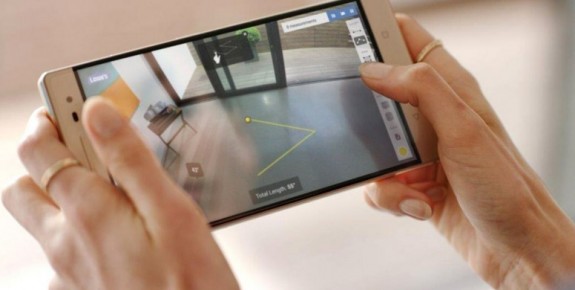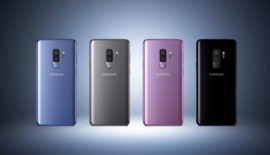Qualcomm unintentionally exposes ASUS ZenFone AR
- Fariha Khan
- January 3, 2017
- 1,527
We didn’t get to know details about the device’s other specs through the press release, but seemingly it will offer a better experience compared to the PHAB2 Pro. An image of the phone displays a regular ZenFone with a bigger camera stack.
Read also: ASUS to release a Snapdragon 835-powered device at CES
Daydream is a platform by Google aimed for high quality mobile VR while Tango makes use of next level sensors and computer vision in order to support mobile AR. The Asus ZenFone AR is the second available Tango-enabled smartphone after the Lenovo PHAB2 Pro. Qualcomm notes support for all of Google’s VR apps for Daydream such as Street View and YouTube in addition to apps such as HBO, Netflix, Hulu, and other gaming experiences.
The 821 chipset in the ZenPhone AR is last generation, but Qualcomm promises VR with high-resolution display, great graphics and high-fidelity sensors for exact head tracking. In addition, it assures long battery life while using AR as a result of Tango-related processing being done on a single, highly efficient SoC.
In terms of chip, Qualcomm notes that complete future Snapdragon 800 series and 600 series processors will offer support for Tango.
We may get to know more about the device at the ASUS press event on January 4th.
Read also: iPhone 7 models w/Qualcomm modem has an improved cellular performance as opposed to Intel
At CES 2017, ASUS announced the Asus ZenFone AR, the world’s first Tango-enabled smartphone to be powered by the Qualcomm Snapdragon 821 processor. It will also be the world’s first mobile device to be both Tango-enabled and Daydream-ready. Tango is a set of sensors and computer vision software that supports smartphone augmented reality experiences. Daydream is Google’s platform for high quality, mobile virtual reality.
Only Snapdragon processors power commercial Tango-enabled devices
The Asus ZenFone AR is the second commercially available Tango-enabled smartphone. The Lenovo PHAB2 Pro, powered by the Snapdragon 652 processor, was the first, launched in June, and is available now. The Snapdragon 652, 653, 820 and 821 processors all support Tango, and so will future Snapdragon 800 series and 600 series processors. All of these processors have a few things in common in terms of their leading ability to support Tango:
Snapdragon processors are engineered to support computationally intensive Tango use cases that involve motion tracking, depth perception, and area learning using cutting-edge computer vision, graphics and sensor processing. All Tango-related processing is done on a single, highly efficient SoC (system-on-a-chip), so users of the Asus ZenFone AR can enjoy high-performance smartphone AR user experiences with long battery life. Premium-tier Snapdragon 821 support for Tango
Snapdragon 821 processors are designed to bring a few significant advantages to Tango and the Asus ZenFone AR, including:
Better graphics: Whether you’re using Tango to measure, game, or virtually shop, having better, more realistic looking graphics is going to enhance your smartphone AR experience. The Qualcomm Adreno 530 GPU in Snapdragon 821 brings a 40% improvement in graphics performance at 40% less power than the Snapdragon 810. So you can get more hours of augmented reality along with great graphics on the ZenFone AR. Better overall performance and power efficiency: One of the incredible things about Tango on Snapdragon is how well 3D graphic overlays match up with actual physical surroundings. It’s a really important capability for smartphone AR; it’s hard to decide whether that refrigerator is going to work in the kitchen, or hit that game target on your dining room table if 3D graphic overlays aren’t tracking quickly, smoothly, and accurately to the actual physical surroundings. Fast, efficient sensor processing is key to this, as is time stamping all of that sensor data within + or – 50 µs accuracy, using the Snapdragon global high-frequency clock built into hardware. The Qualcomm Hexagon 680 DSP with HVX and Qualcomm All-Ways Aware sensor hub are instrumental to the fast, efficient sensor processing of Snapdragon 821. The combination of Hexagon DSP, Qualcomm Spectra ISP and the ultra-low power All-Ways Aware sensor core, are particularly useful for accelerating Tango computer vision use cases.
The Hexagon 680 DSP includes the first implementation of HVX – Hexagon Vector eXtensions, or wide vector SIMD extensions, which are DSP extensions for advanced imaging and computer vision. HVX is designed to handle significant compute workloads for image processing applications such as virtual reality, augmented reality, image processing, video processing, and computer vision. This means that tasks that might otherwise be running on a relatively power-hungry CPU or GPU can run on a comparatively efficient DSP instead.
The integrated All-Ways Aware hub is dedicated for always-on sensor processing, supporting ultra low-power “always-on” context awareness, even when the SoC is off. This is how the Snapdragon 821 processor is able to perform the highly accurate and uniform time stamping of the camera frames and sensor data to the same time reference. The always aware hub is also used for vision processing and generating 6 degrees of freedom (6DoF) positioning used in Tango and other AR applications.
The Asus ZenFone AR will be the world’s first Tango-enabled and Daydream-ready mobile device. With Zenfone AR and the Daydream View headset and controller, you’ll be able to explore new worlds with apps like Google Street View and Fantastic Beasts, dive into your personal VR cinema with YouTube, Netflix, Hulu and HBO, and get your game on with Gunjack 2, LEGO BrickHeadz, Need for Speed and dozens other titles. The ZenFone AR with Snapdragon 821 is built for VR with high-resolution display, ultra-smooth graphics and high-fidelity sensors for precise head tracking. Snapdragon 821 provides the cutting-edge visual, audio and interactive technologies required to deliver truly immersive mobile VR experience for leading Android smartphones.
Visit Qualcomm’s booth (#10948) at CES for a closer look at the Asus ZenFone AR. Follow us here [link to CES page] for more Qualcomm Technologies news at CES






